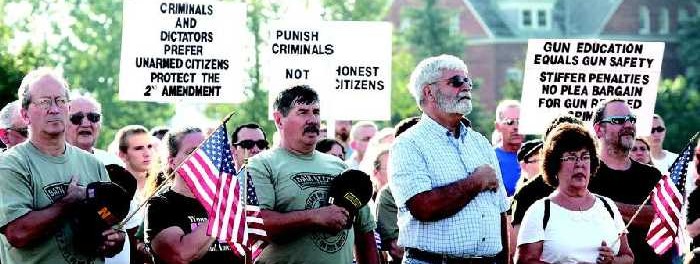Posted November 27th, 2013
(Letter from King to NYSRPA members)
Ladies and Gentlemen,
As a method of providing an update on our fight to overturn New York’s SAFE Act (“the Act”), we are providing this letter, in “Q and A” form, with the answers to questions you might have concerning the case.
Q: What is the current status of the proceedings in the New York action?
As you are aware, in the beginning of the case, we moved for a preliminary injunction. In this motion, we ask the Court to stop the provisions of the SAFE Act from taking effect while the lawsuit is ongoing. In particular, we are seeking the court to enjoin the enforcement of the following provisions of the law:
1. The section making it unlawful to possess an ammunition feeding device containing more than seven rounds of ammunition.
2. The sections making it unlawful to possess, transport, ship, or dispose of, a large capacity ammunition feeding device (we are alternatively seeking to enjoin these provisions as applied to any such device manufactured before September 13, 1994).
3. Certain unintelligible portions of the section making it unlawful to possess a large capacity ammunition feeding device (if the court does not enjoin the entire section).
4. The sections which make it unlawful to possess a device that can be readily restored or converted to accept more than ten rounds of ammunition.”
5. The sections which make it unlawful to possess a device that can be readily restored or converted to accept more than ten rounds of ammunition, or a device that holds more than ten rounds as applied to tubular magazines.
6. The sections which define an “assault weapon” in part as certain rifles and shotguns as having a folding or telescoping stock, a pistol grip that protrudes conspicuously beneath the action of the weapon, or a thumbhole stock.
7. The sections which define an “assault weapon” as a semiautomatic shotgun with a fixed magazine capacity in excess of seven rounds or an ability to accept a detachable magazine. The Defendants have opposed our Motion for Preliminary Injunction and have filed their own Motion to Dismiss and for Summary Judgment, which asks the Court to enter judgment determining that the SAFE Act is valid. In response to the State’s Motion for Summary Judgment, we have filed our own Motion for Summary Judgment. The briefing on these motions (which has been extensive) is complete.
Q: What will happen next?
Since briefing is complete, we believe the Court will schedule an oral argument on the motions. Normally, for cases involving these controversial of issues, courts will hold an oral argument, although the Court is not required to do so; as the issues involved in the motions are purely legal, no testimony is required and the Court may just rule on the papers that have been filed. We do not know, however, if the Court will have a hearing and when it will happen. The procedural rules do not require the Court either to set a hearing or to decide the motion within a specified amount of time. The time in which a court sets a motion for hearing and issues a decision on a matter is impacted by several factors, such as the judge’s schedule, pressing criminal trials, and the complexity of the issues involved. Every judge handles his or her caseload differently.
Q: Will we get relief before January 15, 2014, the effective date of the requirement that all previously grandfathered magazines of more than 10 rounds must be discarded or sold out of state?
Possibly, but unlikely. While we understand that this portion of the law is a source of particular anger with members, the chance of the Court ruling to strike down or otherwise enjoin the law before that date really depends on how quickly the Court decides to either hold a hearing on our motion for preliminary injunction or issue a decision. As mentioned earlier, the Court has almost complete control over its schedule. As described above, there are three motions pending: our Motion for Preliminary Injunction, Defendants Motion to Dismiss and for Summary Judgment, and our own Motion for Summary Judgment. The Court may rule on these motions at the same time, or it may rule on them separately. It is unlikely (but not impossible) that the Court will rule on our motion for preliminary injunction before January 15.
Q: How is this lawsuit affected by other lawsuits challenging the NY law?
Many times when a law is enacted that infringes core rights, like the Act, there are multiple lawsuits filed seeking to stop the law from taking effect or otherwise being enforced. Sometimes, these actions proceed in harmony with each other; most times, they do not. For example, there have been other lawsuits filed which challenge the SAFE Act on various grounds that we may or may not have raised in our lawsuit. One suit has challenged the emergency manner in which the SAFE Act was adopted. This was a potential basis for challenging the law that we considered, but rejected, at the onset of this litigation: our analysis and experience showed that courts do not get involved with the merits of “emergency” determinations, and have historically taken a completely permissive attitude towards legislative circumvention of these aging requirements. We therefore believe that a challenge on this basis would be quickly rejected (as the one brought by Robert Schulz on this same basis has been), would detract from the strong arguments we have prepared, and could cause us to lose credibility with the court.
Thank you,
Tom King
